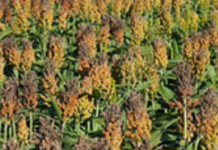Horticulture News
By: Scott Eckert
Harvey County Extension Agent, Horticulture
I have been seeing a lot of dry leaves in Harvey County. Heat and high winds are normal in Kansas but sometimes can catch us off guard causing some drying out of leaves on our landscape trees. Scorch is not a fungus disease but rather a physiological problem associated with damaged roots, limited soil area, or hot, dry winds. Moisture is lost so quickly from the leaves that the roots can’t absorb and transfer water quickly enough to replace what is lost. Though scorch is usually associated with droughty periods, it can appear even when the soil is moist.
Scorched leaves turn brown or, in some cases, turn black from the edges and between the major veins. If severe, the leaf may drop. Leaves may be affected over the entire tree or may be affected only on one side. White pines are also prone to this condition due to the delicacy of the needles. Though rare, we have also seen damage on Colorado blue spruce with a portion of new growth turning brown. These tips will eventually fall off though some homeowners knock them off to improve the appearance of the trees.
Though scorch can be due solely to the weather, the condition of the roots of plants can make them much more susceptible to this condition. Shallow soils such as those over hardpan or rock lead to a limited root system that may not be able to absorb all the water needed. Trees may be more sensitive to scorch during years of heavy rains received in the spring. Though soils are recharged, in many cases so much rain is received that oxygen is driven from the soil resulting in root damage. That root damage can make it more difficult for trees to provide all the water needed for the leaves. Also, root damage due to disease, insects, poor drainage or construction can cause poor water uptake.
What can you do about this? Minimize competition between the tree and the surrounding turf by killing all grass a minimum of 3 feet from the trunk and then mulch. When watering, make sure water reaches 12 inches deep. This can be checked with a wooden dowel or a metal rod (rebar or electric fence post). If the soil is sandy, watering twice a week may be needed. If it is a heavier soil, water only once a week. Waterlogged soils will force oxygen out of the soil and some tree species may drown.
Current Date: 6/12/20
Harvey County,
PO Box 583,
Newton, KS. 67114
K-State Research and Extension is an equal opportunity provider and employer




